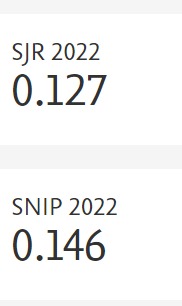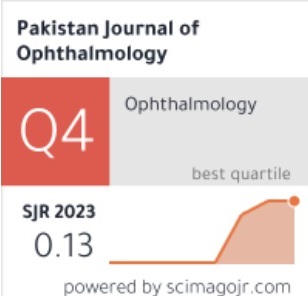Latent Convergent Strabismus Clinical Features and Management in Sudanese Patients
Doi: 10.36351/pjo.v40i1.1735
DOI:
https://doi.org/10.36351/pjo.v40i1.1735Abstract
Purpose: To describe the clinical features and management of latent convergent strabismus among Sudanese patients.
Study Design: Descriptive observational study.
Place and Duration of Study: Makkah Eye Complex, Khartoum, Sudan, from December 2018 to August 2020.
Methods: The study included 137 patients, diagnosed with latent convergent strabismus (esophoria). Demographic data and ocular examination findings including visual acuity, refractive error, and degree of esophoria was collected. Esophoria was assessed by prism cover test (PCT) at near and distance.
Results: Esophoria was more common among females (n = 107, 78.1%) and in age group 15 to 25 years. Headache was the most common complaint (n = 64, 46.7%). Most of the patients (n = 114, 83.2%) had 1 to 5 ∆ of esophoria with a mean of 4.17 ± 2.99∆. Majority of the patients (n = 132, 96.3%) had normal near point of convergence (NPC) 6.98 ± 3.10 cm. Positive fusional vergence (PFV) was high at 24.06 ± 9.01∆, whereas negative fusional vergence (NFV) was low at 5.0 ± 0.21∆D, P = 0.001. Majority of the patients (76.6%) responded well to the refractive correction, 11.7% patients to vision therapy and remaining 11.7% to both refractive correction and vision therapy. Correlation coefficients revealed that there was a positive correlation between, refraction, NPC, and PFV (P ˃ 0.05).
Conclusion: Sophoria was more common among females and young adults. Most of the esophoric patients had uncorrected hyperopia, good PFV and relatively poor NFV amplitude. Early detection and management of young esophoric patients is essential to improve vision and binocular functions.
Downloads
Published
How to Cite
Issue
Section
License
Copyright (c) 2023 Aisha Hassan Osman, Saif Hassan Al-Rasheed

This work is licensed under a Creative Commons Attribution-NonCommercial 4.0 International License.






